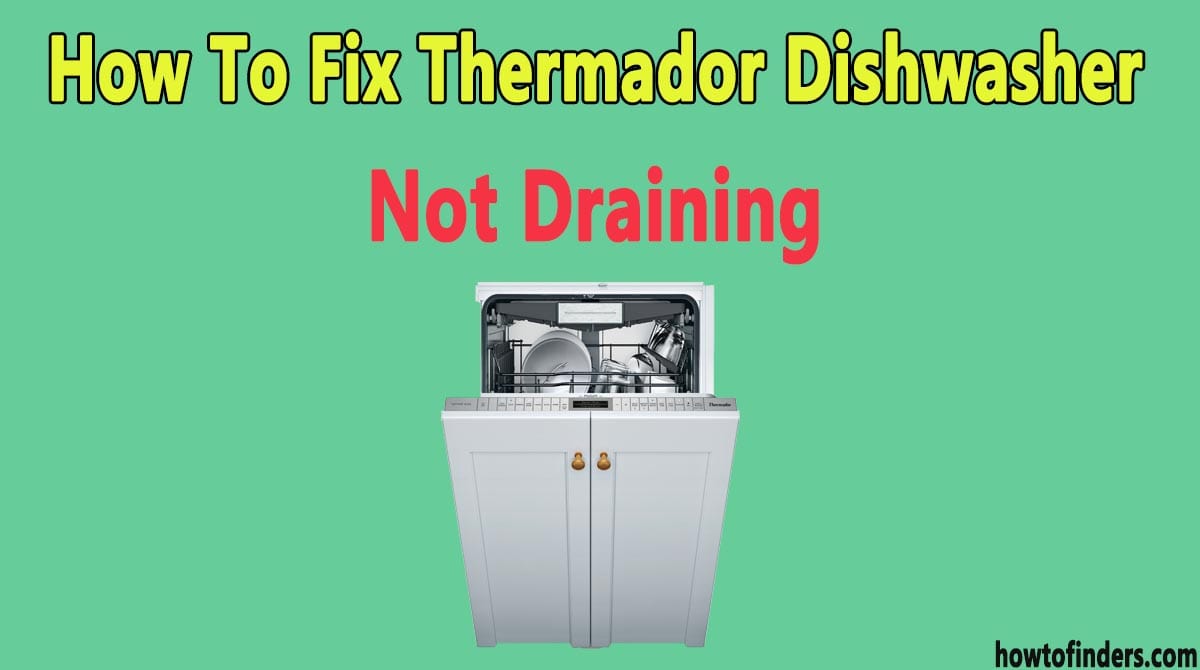Your Thermador dishwasher doesn’t drain the water from the bottom of the machine when you turn it on, so dishes get wet and dirty after each wash cycle.
This can be frustrating, especially if you have to hand-wash your dishes every time you run your dishwasher.
Fortunately, I am a veteran in this subject because I have researched through the internet and found various reasons why it occurs and also its cures.
There are three simple solutions that will have your dishwasher draining again in no time at all! The video below will show you how to fix this issue in two minutes or less.
Check the Water Level
The first thing you need to do is check and see if there’s enough water in your dishwasher. You do that by taking a look at your pump filter.
If it looks empty, or if water is pooling around it, then your problem is likely to be low water.
If there isn’t much water in your dishwasher when you run it, then you need to fill up that filter with water before running another cycle.
Water won’t automatically make its way into that filter when you open up a new cycle.
Instead, you have to manually add some of it from time to time so that your dishwasher can operate properly and clean dishes at their best possible level of quality.

Verify No Dishes in Rack
Before troubleshooting your dishwasher, make sure you don’t have any dishes inside. This can cause water to back up in your machine and impede drainage.
Also check that there are no debris or food stuck on your dishes—this can also lead to a clogged drain. Cleaning out these items may solve your problem!
Clean Out Drain Hose
There’s a drain hose attached to your kitchen sink that extends out of the cabinet under your sink. Use a pair of tongs to remove any particles stuck in it.
Next, you’ll want to add a few drops of dish soap and some water into it; using a toilet plunger, push and pull on each side multiple times to help clean out any clogs that might be in there. Flush again with hot water for good measure.
Finally, make sure all your attachments are connected securely and nothing has slipped off from loosening during cleaning.
Check if you can move anything by pulling on it gently – if it’s loose or comes off easily, go ahead and reattach it now before moving on to the steps below!
Clear Air Gap Vent
A dishwasher’s air gap vent is intended to release any built-up pressure in your home’s drain pipe.
If you have a newer model, you may have noticed that there’s no air gap vent on your model and it looks like it was never there.
There’s actually a tiny hole—about 1/16th of an inch—that doesn’t look like much, but serves as an air gap vent.
You can clear any blockage using a pair of tweezers or needle-nose pliers; just make sure not to obstruct or cover that tiny hole with anything.
Alternatively, some models require you to manually pull up on certain parts of your machine to release pressure build-up and complete drainage.
Run Diagnostic Cycle
From a clean dishwasher, run a diagnostic cycle. Even if you don’t think there is an issue with your machine, it is always a good idea to do a diagnostic cycle before using a dishwasher.
Doing so will ensure that your machine is working properly and your dishes are getting clean.
This troubleshooting step will allow you to determine whether or not there are any existing issues with your appliance.
Install New Drain Hose
The old rubber drain hose may be cracked or worn, causing it to leak and prevent water from draining into your dishwasher. Once you’ve identified your hose as a possible problem, you can replace it.
Buy a new drain hose at home improvement or plumbing stores. Be sure to measure your current drain hose before purchasing a replacement part.
Most drains hoses are less than 20-feet long, so if yours is longer than that make sure you buy one that’s long enough for your needs.
Also read: How To Fix Thermador Dishwasher Not Drying
Conclusion
While you can certainly fix the problem of Thermador Dishwasher Not Draining, it is not recommended.
Repairing a dishwasher will void any warranty, it’s possible to receive an electric shock from faulty wiring or other problems in which case you could sustain serious injuries.
It’s best to call a professional for all major appliances. The process is simple and usually quite affordable when compared to buying an entirely new appliance.
In most cases, repair costs are less than $200 depending on what needs to be replaced and how involved it is.
With service prices being so low, it’s in your best interest as a homeowner to take advantage of them every time you have issues with any appliance.